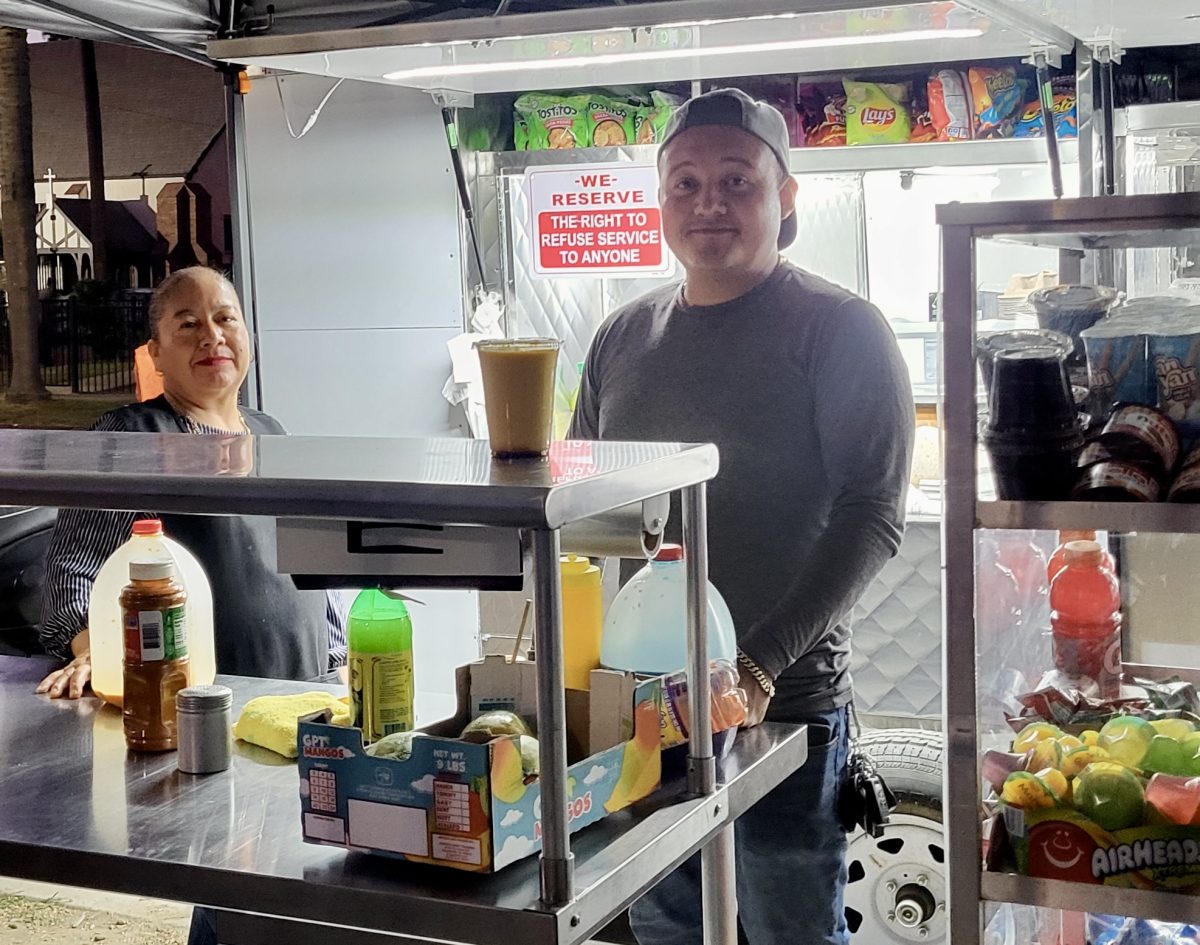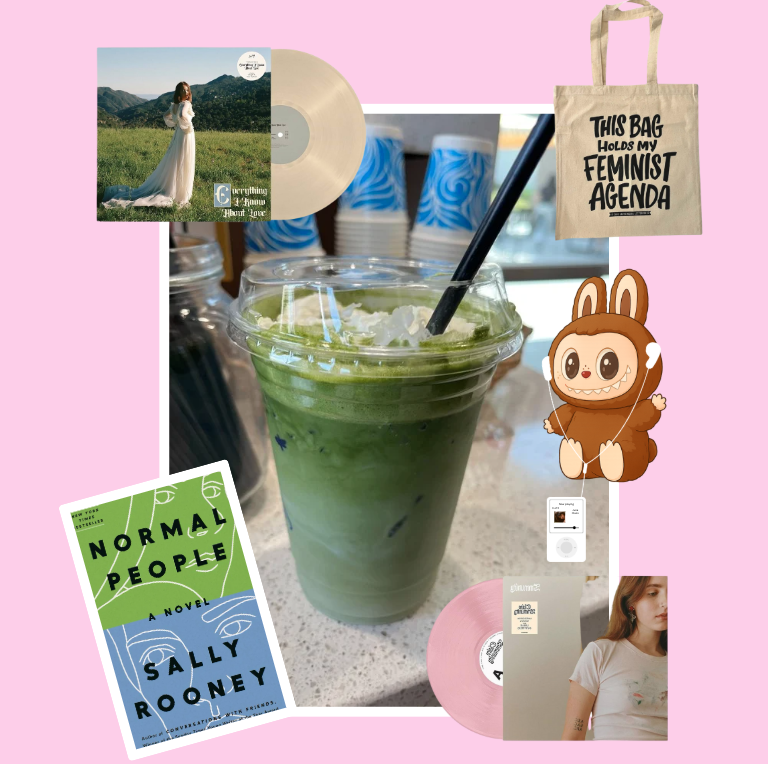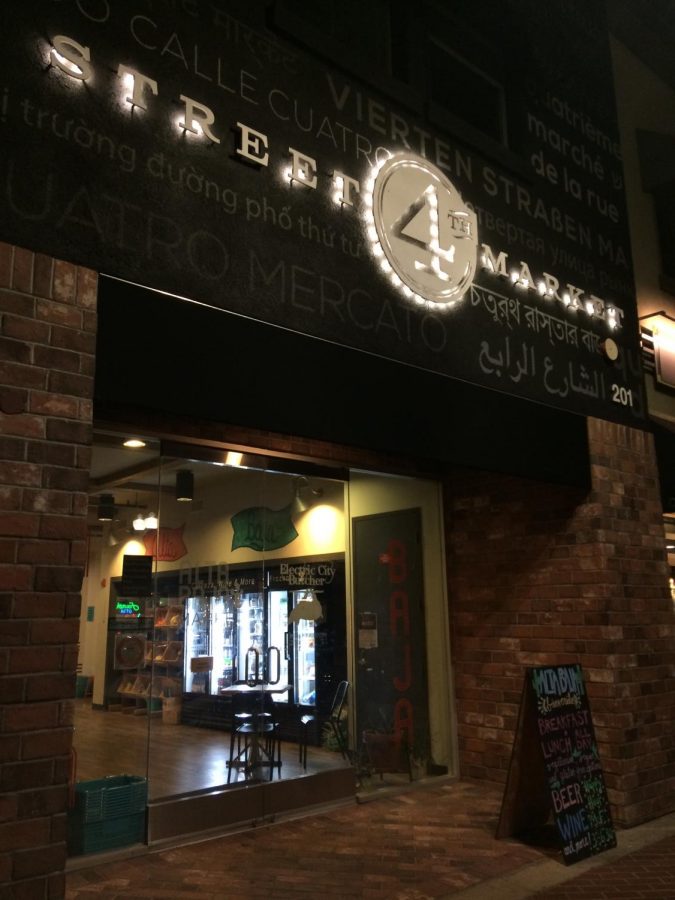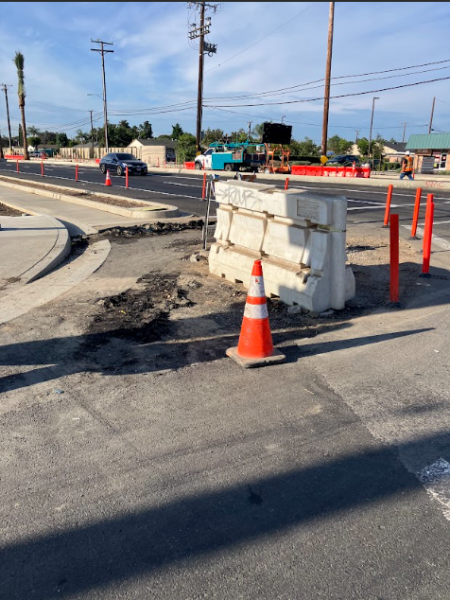Downtown Santa Ana under gentrification
4th Street Market
In sociological terms, gentrification is the renovation of a neighborhood to improve it so that it conforms to white, middle-class ideals. Gentrification can have a negative affect in communities of people of color and low-income people because the prices in housing and businesses rise and force many to leave when they can no longer afford it. Downtown Santa Ana is currently under gentrification and Mexican businesses have been replaced with hip new places.
Junior Tais Avila is in a group that dances a traditional Mexican dance, baile folklorico. She actively practices a Mexican tradition and has danced at an event in Downtown Santa Ana. Avila states that she has seen gentrification in this neighborhood; it’s a place she has always known, but now it seems a bit different. The difference she has noticed are the changes in businesses. “I’ve seen little Mexican shops close down that used to sew clothes and sell traditional dresses. They opened this hipster-like cafe and renovated the 4th Street Market which I don’t think is very Mexican compared to what it was a few years ago,” Avila says. She is correct; many businesses have gone and have been replaced by the new “hipster-like businesses.” However, it’s not all bad news; locals have been hired at these new stores and the renovated 4th Street Market is a place where people can hang out with their families or friends. Avila has been there and she enjoyed it very much, but she wishes that they would have kept the Mexican businesses because she felt they were the “part of the city that had lots of Mexican culture.”
Since the beginnings of city life in the United States, various ethnic groups have dominated parts of a city and displayed their cultures to make it seem more like home. According to KCET’s article, “The Gentrification of Santa Ana: From Origin to Resistance,” in the late 1800s, Mexican immigrants took Downtown Santa Ana, which was once white, wealthy, and conservative, and made it into a large center for a Mexican, working class and immigrant identity. During 1970 to 1980, the number of Latino residents increased from 40,000 to 90,000, and most of them were Mexican immigrants. Gentrification was put on hold in the mid-1970s while Downtown Santa Ana became a Mexican cultural and working class commercial zone. Businesses were mostly interested in meeting the interests of Hispanics due to them being the majority in that area. A former Council Member in the 1990s praised Latinos for saving the Downtown by creating, “a thriving cultural business district infusing cultural diversity and economically sustaining the Downtown.”

E 4th Street and N Spurgeon Street
Back in 2016, Downtown Santa Ana was awarded with the “great neighborhood” award from the American Planning Association. During this celebration on October 20, 2016 at East End Spurgeon Promenade, according to OC Weekly, anti-gentrification protesters were present. They were holding signs against gentrification in La Cuatro, a name used for 4th Street by the people in the community, and shouted, “We will not celebrate gentrification.” The protesters were angered by the recognition their neighborhood was experiencing when many of the people who lived there were struggling to pay the increased prices in their housing and the businesses around them.
Gentrification can bring economic problems for low-income people and people of color because of the increased price in housing and businesses. When a middle class, white community enters into a community of color, businesses are more expensive and the housing is renovated or new pricier homes are built. Many people of color lose their businesses and are replaced by white businesses. These economic problems force communities of color to move away.
There is still much Latino culture in Downtown Santa Ana even as it is going through gentrification, and many keep fighting to keep their little piece of Mexico.

Fun Facts:
I have an obsession with shoes.
I'm a vegan.
I have ruby ball cacti named Nora and Sandy.





































